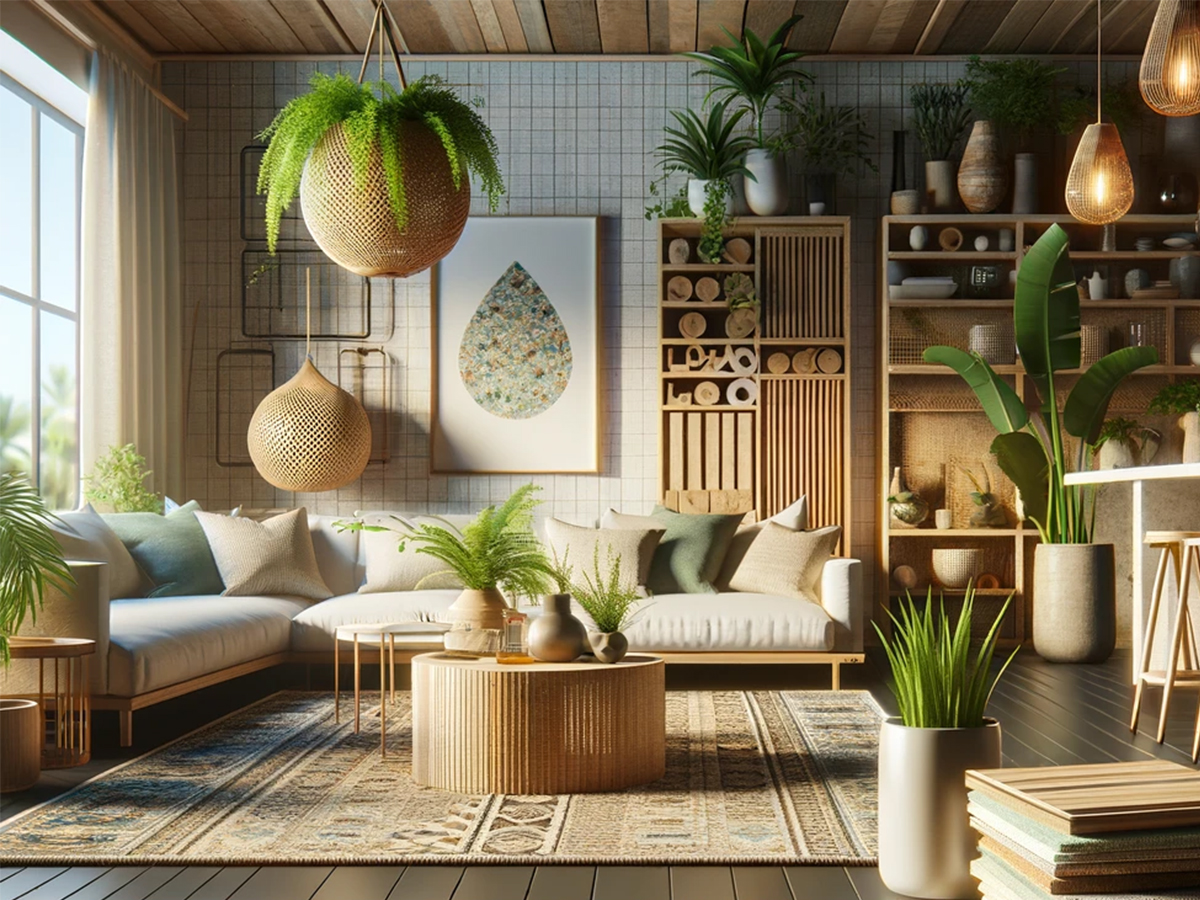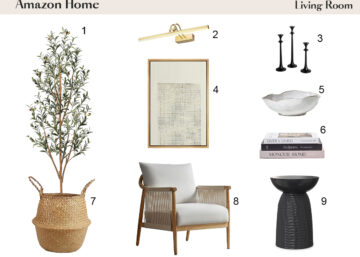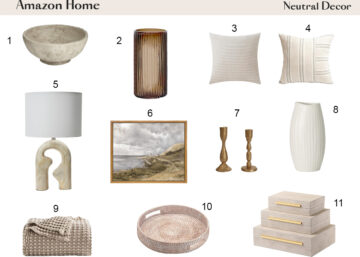Eco-Friendly Design: Sustainable Materials for Your Home
Introduction: Embracing the Green Revolution in Interior Design
In an era where the echo of environmental sustainability resonates louder than ever, the concept of eco-friendly design has transcended mere trend status, becoming a fundamental ethos guiding the modern interior design and architectural landscape. This shift towards sustainability is not just about reducing the carbon footprint but also about crafting spaces that promote health, wellbeing, and a deeper connection with the natural world. However, the journey towards sustainable living spaces is fraught with misconceptions and overlooked opportunities, especially in the realm of material selection and application.
Unearthing the Hidden Gems of Sustainable Materials
The dialogue surrounding eco-friendly design often orbits around the more conspicuous elements – solar panels, energy-efficient appliances, and LED lighting. Yet, the true essence of sustainable interior design lies in the very bones of our spaces – the materials we choose to envelop and fill our surroundings. These choices, from bamboo flooring to recycled glass countertops, have profound environmental and health implications that extend well beyond the visible spectrum.
Pioneering a New Perspective
The industry’s approach to sustainable design is evolving, integrating innovative 3D rendering and interior design principles with a deep commitment to environmental stewardship. This unique intersection sheds light on the often underappreciated role of visualization technology in promoting sustainable materials. By illustrating the aesthetic and functional benefits of eco-friendly choices through detailed renderings and floor plans, a new dimension of sustainable design emerges, one that emphasizes the harmony between beauty, functionality, and environmental responsibility.
This forward-thinking approach aims to cultivate an informed, thoughtful conversation around the significance of sustainable materials in shaping the future of interior design. It’s about demystifying the complexities of eco-friendly design, making it accessible and appealing to a broad audience, from architects and designers to homeowners and commercial entities. As the industry moves forward, it does so not just as a collection of services but as a beacon of innovation and inspiration in the journey towards more sustainable living environments.
The Essence of Eco-Friendly Design
The heart of eco-friendly design beats to the rhythm of sustainability and mindfulness, reflecting a profound respect for the environment and the well-being of the inhabitants of the spaces it creates. This design philosophy transcends the traditional aesthetics and functionality of interior design, embedding within it the principles of environmental stewardship, energy efficiency, and material sustainability.
A Holistic Approach to Sustainability
At its core, eco-friendly design advocates for a holistic approach to creating spaces. It’s not just about individual elements being environmentally friendly but about the entire lifecycle of the materials and the space itself. This encompasses everything from the sourcing of raw materials to the end-of-life disposal or recycling of these materials. By considering the environmental impact at every stage, eco-friendly design aims to minimize negative effects on the planet while enhancing the health and comfort of its occupants.
The Interconnectivity of Design and Well-being
One of the most compelling aspects of eco-friendly design is its emphasis on the interconnectivity between environmental health and human well-being. The use of non-toxic, natural, and sustainable materials contributes to cleaner indoor air quality, reducing the risk of health issues associated with harmful chemicals. This design ethos extends to the promotion of natural light and the incorporation of plant life, both of which have been shown to improve mood, productivity, and overall health.
Rethinking Materials and Methods
Eco-friendly design challenges designers and architects to rethink their choice of materials and construction methods. It encourages the exploration of innovative, sustainable materials that have lesser-known benefits, such as bamboo, which is not only rapidly renewable but also has strength comparable to traditional hardwoods. Similarly, the use of recycled materials, such as glass and plastic, in countertops or flooring, reflects a commitment to reducing waste and promoting circular economies.
Energy Efficiency and Renewable Resources
A key pillar of eco-friendly design is energy efficiency. This includes the integration of technologies such as solar panels, energy-efficient appliances, and smart thermostats, as well as architectural designs that maximize natural heating, cooling, and lighting. The goal is to reduce the energy consumption of buildings, lowering their carbon footprint and operational costs.
The Role of Technology in Sustainable Design
Advancements in technology, particularly in 3D rendering and visualization tools, have revolutionized eco-friendly design. These tools allow designers and clients to explore and experiment with sustainable materials and designs in virtual environments, making informed decisions that align with environmental goals. Through detailed renderings, the potential of sustainable design becomes vividly clear, enabling a deeper understanding and appreciation of eco-friendly choices.
Understanding Sustainable Materials
In the quest for a more sustainable future, the materials we choose to shape our environments hold the key to significantly reducing our ecological footprint. Sustainable materials are those that, through their production, use, and disposal, offer a lower environmental impact than traditional alternatives. They are central to the ethos of eco-friendly design, supporting not just the aesthetics of a space but its ecological harmony too.
Defining Sustainability in Materials
Sustainable materials are characterized by several key features. They are often sourced from renewable resources, meaning they can be regrown or replenished naturally over a short period, thus minimizing the depletion of natural resources. These materials are also evaluated on their energy efficiency, both in terms of their production processes and their performance within a building’s design. Durability and recyclability are other crucial aspects, ensuring that the materials can last longer and be reused or recycled at the end of their life cycle, thereby reducing waste.
The Lifecycle Perspective
A truly sustainable material must be assessed through a lifecycle perspective — from extraction and manufacturing to usage and eventual disposal or recycling. This comprehensive view helps in understanding the true environmental cost of materials, pushing the industry towards choices that have the most negligible net impact on our planet. It’s not just about the immediate benefits of using a particular material but understanding its entire journey and its effects on the ecosystem.
Innovative Sustainable Materials
The innovation in sustainable materials has been remarkable, offering a plethora of options for designers and homeowners alike. Bamboo, for instance, has gained popularity not just for its strength and aesthetic appeal but also for its rapid regrowth, making it a highly renewable resource. Cork is another material celebrated for its sustainability; it is harvested from the bark of cork oak trees without harming the tree, and its production process is remarkably energy efficient.
Recycled materials have also taken center stage, with products such as recycled glass and plastic being repurposed into tiles, countertops, and even furniture. These materials divert waste from landfills and reduce the demand for virgin resources, showcasing the possibilities of a circular economy in interior design.
The Importance of Low-VOC Materials
Volatile Organic Compounds (VOCs) are chemicals found in many building materials that can evaporate into the air and cause health issues. Sustainable design prioritizes low-VOC or VOC-free paints, adhesives, and finishes to improve indoor air quality and ensure the health and safety of the building’s occupants. The move towards these materials reflects a broader understanding of sustainability that encompasses not just environmental impact but human health as well.
The Role of Certification and Transparency
With the growing demand for sustainable materials, certification systems and labels have become crucial in ensuring transparency and accountability. Certifications such as LEED (Leadership in Energy and Environmental Design), FSC (Forest Stewardship Council), and GreenGuard help consumers and professionals identify products that meet stringent environmental and health criteria. These systems encourage a move towards more sustainable practices across the industry, from the sourcing of raw materials to manufacturing processes.
Sustainable Materials for Different Home Spaces
Embracing sustainability in home design involves a thoughtful selection of materials that not only enhance the aesthetic appeal of the space but also contribute positively to the environment and the well-being of its inhabitants. Each room within a home offers unique opportunities to incorporate sustainable materials, tailored to the functions and needs of the space.
Living Room: The Heart of Sustainable Living
The living room, often the most frequented space in a home, provides a canvas for showcasing eco-friendly design. Sustainable hardwoods, like bamboo or reclaimed wood, offer a durable and visually appealing flooring option that adds warmth and character. For furniture, consider pieces made from recycled metals, reclaimed wood, or certified sustainable forests. Sofas and chairs upholstered with natural fibers like organic cotton, wool, or recycled polyester not only reduce environmental impact but also ensure a healthier indoor air quality free from toxic chemicals.
- Accent Pieces: Opt for decor made from recycled glass or metal, promoting a circular economy while adding unique touches to your living space.
- Rugs and Carpets: Look for options made from natural, renewable fibers such as jute, sisal, or wool, which are biodegradable and offer a sustainable alternative to synthetic materials.
Kitchen: Cooking Up Sustainability
The kitchen, the heart of culinary creativity, can be transformed with sustainable materials that are both functional and stylish. Countertops made from recycled glass, bamboo, or sustainably sourced quartz offer durability and an eco-friendly flair. Cabinets crafted from reclaimed wood or those certified by the Forest Stewardship Council (FSC) ensure that your kitchen’s foundation is both sustainable and sturdy.
- Appliances: Investing in energy-efficient appliances reduces energy consumption, offering long-term savings and a lower carbon footprint.
- Backsplashes and Flooring: Recycled ceramic tiles or linoleum made from natural, renewable materials can add color and texture to your kitchen while being environmentally friendly.
Bedroom: A Sanctuary of Sustainability
The bedroom should be a sanctuary, prioritizing materials that promote relaxation and health. Organic bedding made from natural fibers such as organic cotton, linen, or bamboo is free from harmful chemicals and dyes, ensuring a safe and restful sleep. For the bed frame and furniture, consider sustainably sourced wood or metal recycled from other uses.
- Window Treatments: Natural fiber curtains or shades not only provide privacy and light control but also contribute to the thermal efficiency of the space, reducing energy costs.
- Flooring: Wool carpets or FSC-certified hardwood floors offer sustainable options that add warmth and comfort to the bedroom environment.
Bathroom: Eco-Friendly Functionality
In the bathroom, sustainable design focuses on water conservation and non-toxic materials. Low-flow toilets, showers, and faucets reduce water usage without compromising performance. Non-toxic ceramic tiles made from recycled materials can be used for flooring and shower surrounds, offering durability and resistance to moisture.
- Countertops: Consider using recycled glass or composite materials made from recycled plastics, providing a resilient and low-maintenance surface.
- Cabinetry: Bamboo or reclaimed wood cabinets not only offer a moisture-resistant solution but also a visually striking one that stands up to the humid bathroom environment.
Innovative materials and technologies continue to push the boundaries of what’s possible in eco-friendly home design. From bio-based plastics and recycled steel to cork flooring and wool insulation, the options for sustainable materials are expanding, offering new ways to reduce environmental impact across different home spaces. By choosing these materials, homeowners can create interiors that are not only aesthetically pleasing but also aligned with the principles of sustainability and environmental stewardship.
Conclusion
The journey toward integrating sustainable materials into home spaces is both a challenge and an opportunity. As we navigate the complexities of eco-friendly design, it’s clear that the path forward is not just about selecting materials that are kind to the planet but also about fostering a deeper understanding and appreciation of sustainability in our living environments.
Embracing a Sustainable Future
The shift towards sustainable materials represents more than a trend; it signifies a collective movement towards responsibility and care for our environment. This transition requires us to rethink our design choices, innovate, and embrace materials and practices that contribute to a healthier planet. By prioritizing sustainability, we not only enhance the aesthetic and functional qualities of our spaces but also ensure their longevity and resilience.
The Role of Education and Advocacy
A crucial aspect of this movement is education. Informing and inspiring homeowners, designers, and architects about the benefits and possibilities of sustainable materials is essential. Through continued learning and advocacy, we can demystify eco-friendly design, making it more accessible and desirable. By sharing knowledge and experiences, we cultivate a community that values sustainability as an integral part of design thinking.
The Power of Collaboration
The successful integration of sustainable materials into home design relies on collaboration among all stakeholders. Designers, architects, manufacturers, and clients must work together to overcome challenges, from cost and availability to regulatory hurdles. This collaborative approach enables the exchange of ideas and solutions, driving innovation and making sustainable design achievable on a larger scale.
Looking Ahead
As we look to the future, the potential for sustainable materials in transforming our living spaces is immense. By embracing eco-friendly design, we commit to creating environments that are not only beautiful and functional but also harmonious with the world around us. The journey towards sustainability is ongoing, filled with challenges, but also rich with opportunities for growth and innovation. Together, we can shape a future where every design choice contributes to a healthier, more sustainable world.
In conclusion, the adoption of sustainable materials in home design is an essential step towards a more environmentally responsible and health-conscious living environment. As we continue to explore and integrate these materials, we pave the way for a future where design and sustainability are inextricably linked, offering a blueprint for living that respects both our needs and those of the planet.








